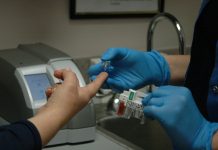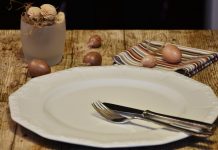
In making lunches for people with diabetes, remember that variety helps ensure that those on insulin eat enough of the healthiest foods. Plan to include contrasts in flavor, texture, temperature, shape, and color. When the weather is cold, you could send a cup of soup in a thermos. Many businesses now provide a microwave for employee use. Casseroles and leftovers can be reheated in microwave safe cookware.
A meal is more appetizing when it contains something moist to offset dry food, tart to offset the sweet and crisp to offset the soft. To add moisture, add mayonnaise, mustard, horseradish sauce or catsup on sandwiches, lemon juice on fruit or vinegar on raw vegetables. Try including six-ounce cans of either tart tomato or vegetable juice or unsweetened fruit juices in boxes. The juice boxes can be frozen in the summer and they will help keep the whole lunch cold as the juice thaws. Coffee or tea can be carried hot or iced in summer.
Raw vegetables and pickles add crispness. Include zucchini, green pepper strips, broccoli, cauliflower, cucumber, carrots, celery, radishes, sliced onion, cherry tomatoes or crisp lettuce. To save time, clean a pound of carrots or a whole head of cauliflower at one time. Store the rinsed vegetables wrapped in a paper towel in a plastic bag in the refrigerator.
Fresh fruits are easy to pack. To change from apples and oranges, try fresh fruit in season cut in finger size pieces. Chilled canned fruits, sugar-free gelatin or pudding or a baked apple travel well in wide mouth thermos containers. Remember to pack a spoon.
A brown bag lunch does not need to be a slice of bologna between two slices of white bread.



